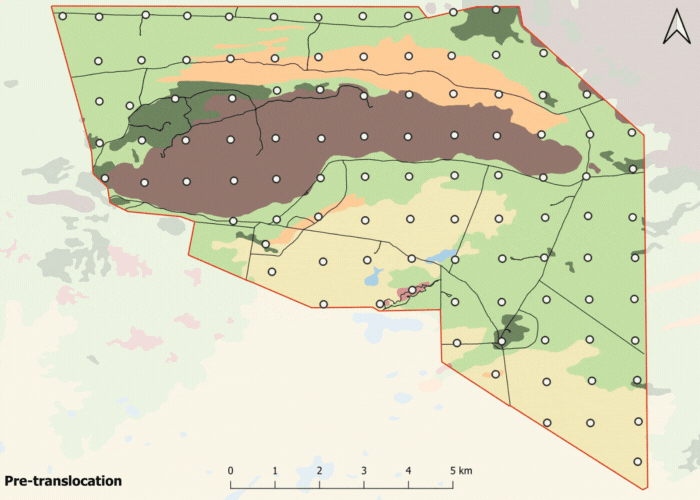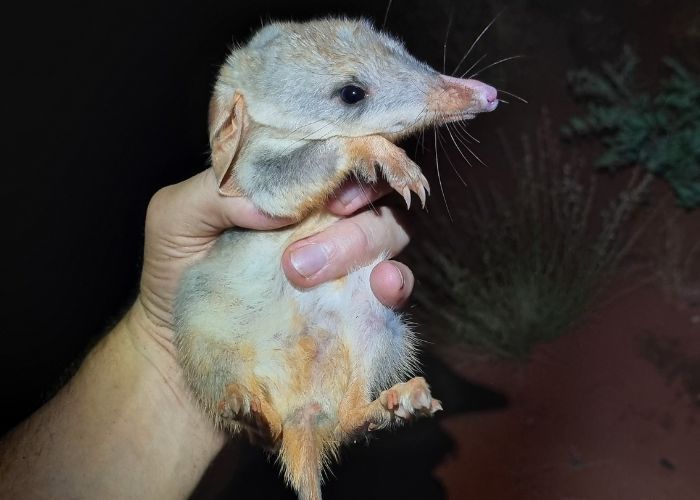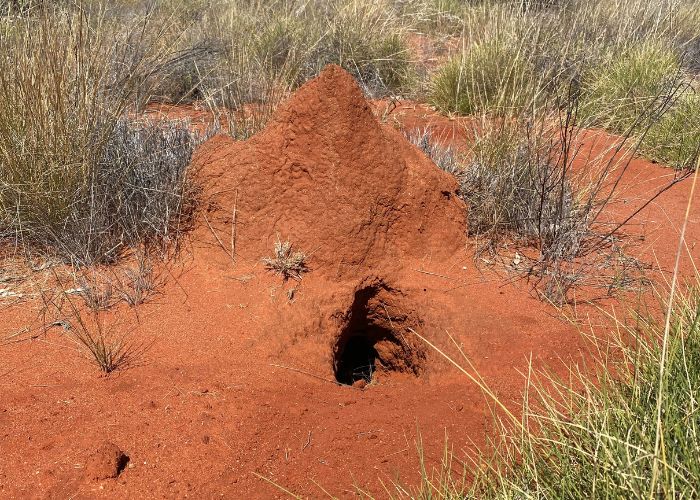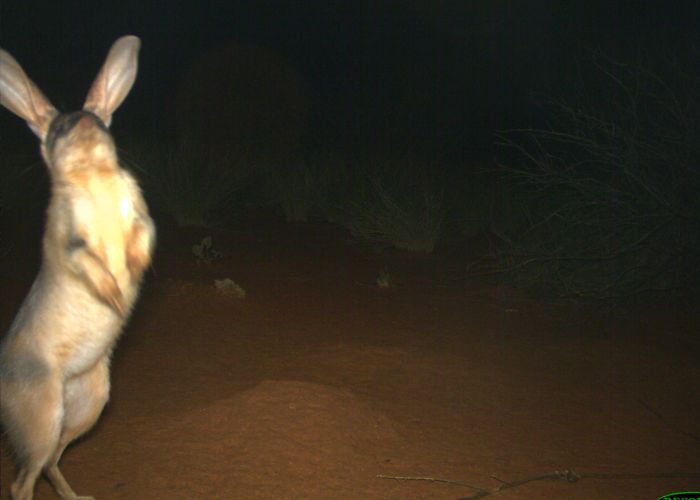Populations of the Bilby, Australia’s answer to the Easter bunny, continue to grow, with more than 3,300 individuals protected across a network of six feral predator-free fenced areas managed by Australian Wildlife Conservancy (AWC).
In the fourth year of the annual AWC Bilby Census, populations were surveyed at AWC’s Mount Gibson (WA), Newhaven (NT), Yookamurra (SA) and Scotia (NSW) Wildlife Sanctuaries as well as Pilliga State Conservation Area and Mallee Cliffs National Park where AWC works in partnership with NSW National Parks and Wildlife Service (NPWS).
Since the 2023 census, the Bilby population at Newhaven has dramatically expanded throughout the fenced safe haven, while in the Pilliga Bilbies have dispersed from the smaller breeding area into the wider fenced area. At Yookamurra, Bilby numbers have doubled since the end of the drought in 2020.
 Sam Mulvena/AWC
Sam Mulvena/AWC
“At Newhaven, Bilby burrows are completely transforming the landscape,” according to Wildlife Ecologist Dr Tim Henderson. “They’re popping up everywhere, even on our access tracks which can make it a little difficult for us to get around but it’s great to see.”
“All this burrowing is reinvigorating the landscape, and it’s not just Bilbies which benefit. We sometimes see multiple species using Bilby burrows, including Golden Bandicoots and Burrowing Bettongs. Bilbies will normally dig a single burrow, then Burrowing Bettongs will come in and renovate it into a multi-entrance complex. This level of earthworks is incredible.”
In 2022, 66 bilbies were released inside Newhaven’s 9,450-hectare feral predator-free fenced area on the traditional lands of Ngalia-Warlpiri and Luritja people. The reintroduction was part of an AWC program to bring back at least 10 locally-extinct species to Central Australia. Bilbies were the 4th species restored to the sanctuary after being absent in the region for over 60 years.

Since the reintroduction, the long-eared marsupials have dispersed throughout the fenced area, with detection rates of the species doubling on motion-sensor cameras set up to monitor the population. Initially, individuals were picked up on motion-sensor cameras at 10-20% of sites across the sanctuary however 18 months later, they are being detected at over 50% of sites.
“This is great news because it indicates that their population is growing and they’re occupying a lot of the available habitat.”
Meanwhile, in NSW’s Pilliga State Conservation Area, ecologists are also witnessing a burrowing frenzy in the last 12 months. The prolific foragers and diggers play an important role as ecosystem engineers, turning over 20 tonnes of soil annually through burrowing and digging for food. Their digging improves water infiltration and creates fertile microhabitats where plant seeds can germinate.

“The bilbies with their engineering colleagues, the bettongs, have turned over a lot of soil in their search for food and when digging burrows,” said Senior Wildlife Ecologist, Dr Vicki Stokes. “These activities will improve the ecosystem health of the Pilliga forest over time.”
During a recent population survey in the Pilliga, Dr Vicki Stokes and her team encountered several baby bilbies.
“Two of the female Bilbies had tiny baby Bilbies (called joeys) in their pouches. We’ve also had increasing Bilby activity on motion-sensor cameras across the fenced area, indicating that the population is doing well.”

In South Australia, at Yookamurra Wildlife Sanctuary on the land of the Ngarrindjeri Nation, Bilbies appear to have been on a breeding bonanza. Ecologists saw more individuals during a spotlighting survey conducted earlier this month, than they had recorded at any time in the last five years.
The population at Yookamurra, which is located 90 kilometres northeast of Adelaide, is now estimated at 95 individuals in 2024, nearly double the number present in 2020, after the region experienced a severe drought.
“Yookamurra’s Bilby population is at a five-year high, and we saw quite a few young bilbies running around, so we know they’re still out there breeding,” said Dr Alexandra Ross, Acting Regional Ecologist. “Last year’s estimate was constrained by inclement weather during the survey resulting in very few bilby observations. We had to wait until warmer conditions to repeat the survey and we are very pleased that our Bilby population is the highest since 2019.”
With Easter falling early in 2024, it coincides with the next round of Bilby surveys underway throughout March at several other sites, including Scotia Wildlife Sanctuary and Mallee Cliffs National Park in NSW.
Support AWC's science-led conservation work to safeguard the Bilby's future
Donate Now